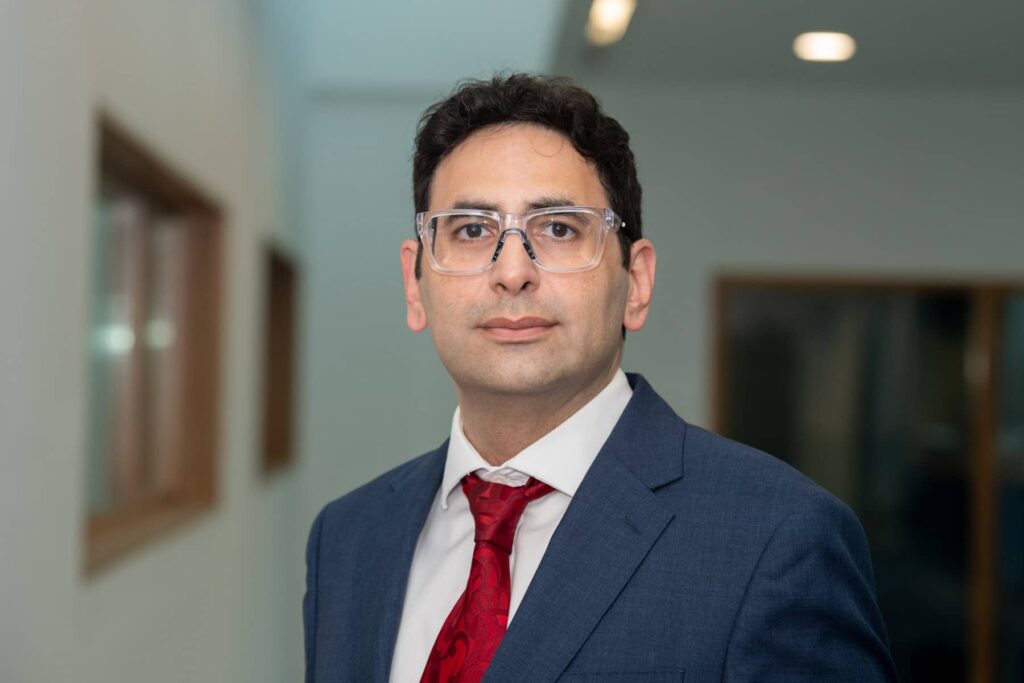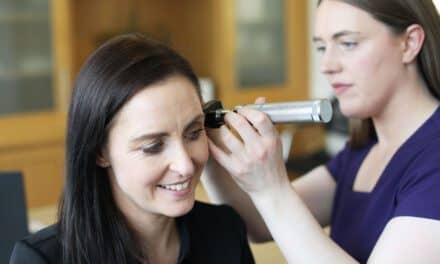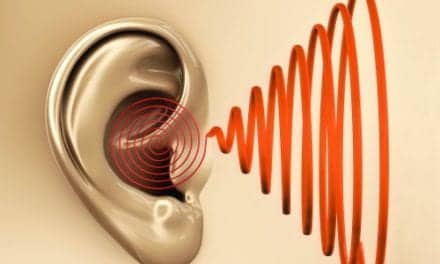Summary:
The 2020 NICE guideline for tinnitus care outlines an evidence-based, patient-centered model that endorses psychological interventions like CBT, but its full implementation is hindered by systemic barriers—prompting calls for a revised, more inclusive framework that reflects evolving audiological practice and emerging evidence.
Key Takeaways:
Guideline Revision Needed: As evidence and practice evolve, the NICE guideline must be updated to reflect the expanded therapeutic role of audiologists, integrate successful innovations, and resolve structural contradictions that limit patient access to optimal care.
Implementation Gap: Despite CBT being a core NICE recommendation for tinnitus distress, most UK patients cannot access it due to workforce and delivery model constraints, especially the guideline’s restriction to psychologist-only delivery.
Audiologist-Delivered CBT: Recent studies and service evaluations demonstrate that audiologists can effectively deliver CBT, sound therapy, and counseling, challenging outdated assumptions and supporting scalable, multidisciplinary care models.
By Hashir Aazh, PhD
The 2020 NICE guideline for tinnitus management in the United Kingdom (UK) represents a rational and progressive vision of patient-centered care, affirming the importance of psychological interventions such as cognitive behavioral therapy (CBT). However, the guideline’s promise remains largely unrealized due to structural contradictions in workforce models and service delivery. This article adopts a Hegelian teleological and dialectical framework to examine the gap between NICE’s recommendations and real-world implementation.
We argue that audiologist-delivered CBT, sound therapy, education, and counseling are not only feasible and effective, but necessary components of a scalable tinnitus care model for the UK. Drawing on emerging evidence, clinical evaluations, and patient-reported outcomes, we call for a revision of the guideline that reflects the evolving therapeutic role of audiologists and acknowledges innovations that have proven successful in practice. The contradiction between what the guideline prescribes and what the system delivers must be resolved—not marginally, but dialectically—so that what is rational may finally become real.
The 2020 NICE guideline for tinnitus management in the UK offers a near-perfect model of evidence-based and patient-centered care [1]. It affirms that tinnitus is not just an auditory issue, but a multidimensional condition requiring medical, audiological, and psychological support. In principle, the guideline’s endorsement of psychological therapies, such as cognitive behavioral therapy (CBT), marks a significant step forward. In practice, however, the promise of the guideline remains largely unfulfilled.
According to a 2024 report by Tinnitus UK, a registered charity, mental health support for tinnitus patients remains limited in primary care—only 5% of those who sought help from their general practitioner (GP) were offered CBT, despite it being the recommended intervention in the NICE guideline [2]. This contradiction—between the clarity of the guideline and the inaccessibility of its recommendations—reveals a paradox at the heart of UK tinnitus care: a perfect guideline stranded in an imperfect system.
As the guideline reaches its five-year milestone and enters its formal review phase, this article offers a perspective grounded in lived clinical realities, emerging evidence, and philosophical critique. While the recommendations are clinically robust, the assumptions about workforce, delivery models, and system capacity on which they rest must now be reconsidered. Adopting a teleological and dialectical framework, inspired by Hegel [3], we explore not only the intended trajectory of the NICE guideline but also its unintended consequences.
The failure of implementation, we suggest, lies not in the recommendations themselves but in the contradictions embedded within the systems meant to enact them. What unfolds is a classic case of what Hegel called the “cunning of reason”—the idea that history moves not through direct intention, but through rational forces that expose and ultimately resolve contradictions, often by producing outcomes no one planned. Here, the NICE guideline, in aiming to rationalize care, reveals the irrationality of the system in which it is embedded.
To understand how we arrived at this juncture, we must take a teleological view. The guideline is the culmination of decades of research and advocacy—a reasoned blueprint of what tinnitus care should be. But as Hegel reminds us, history does not bend to ideals alone. It advances on the “slaughter-bench” of structural contradictions, institutional inertia, and unintended outcomes.
The Implementation Gap
The most glaring contradiction lies in the implementation gap. NICE rightly recommends CBT as the most effective intervention for tinnitus-related distress, based on the comprehensive Cochrane reviews which concluded that CBT likely reduces the negative impact of tinnitus on quality of life, with minimal evidence of harm [4,5]. However, at the time of publication, all included studies focused on psychologist-delivered CBT. The guideline, therefore, assumed a delivery model that was—and still is—largely absent from UK audiology services. In fact, NICE explicitly stated that CBT and internet-based CBT (iCBT) should only be provided by psychologists, citing a lack of supporting evidence for audiologist-led versions. Yet this reflects a broader misconception: the absence of evidence is not, in itself, evidence of absence [6].
It also overlooks a crucial point—many elements of CBT have been effectively adapted for use in everyday clinical practice and even for guided self-help. The popularity of CBT-based self-help books and digital tools highlights its structured, teachable nature. In tinnitus care, core CBT techniques such as thought monitoring, behavioral experiments, and cognitive reframing can be delivered by trained audiologists or used independently by patients, with significant benefit.
Support for Audiologist-Delivered CBT
The evidence landscape has also shifted. A scoping review by Burke and El Refaie [7] identified several studies supporting audiologist-delivered CBT, highlighting growing evidence of its safety, efficacy, and scalability. Among these, randomized controlled trials (RCT) by Beukes et al [8,9] showed that audiologist-guided iCBT significantly reduced tinnitus distress, insomnia, and negative cognitions, with sustained benefits at follow-up. These studies directly challenge NICE’s earlier caution and illustrates how delivery models have evolved beyond what was considered in 2020.
Patient perspectives have consistently affirmed the value of audiologist-delivered CBT. In a 2019 service evaluation by Aazh et al. [10]—conducted within an NHS audiology clinic—patients rated both the effectiveness and acceptability of CBT provided by audiologists for tinnitus and hyperacusis extremely highly. Median ratings were 8/10 for effectiveness and 10/10 for acceptability, with patients reporting substantial improvements across a range of validated clinical measures—including tinnitus distress, hyperacusis, insomnia, anxiety, and depression. The effect sizes were large for all outcomes.
These findings highlight not only the feasibility of audiologist-delivered CBT in a public healthcare setting, but also its positive reception and meaningful clinical impact from the perspective of those who matter most: the patients. As Antoine de Saint-Exupéry reminds us in The Little Prince, adults are often preoccupied with numbers—but what truly matters is invisible to the eye. Patient-reported experiences and subjective improvements, though not always fully captured in statistics, offer a deeper measure of value. In this case, the numbers support the story, but the story—the patients’ sense of change, control, and relief—is what truly justifies the intervention.
A Broader Model of Care
But CBT is not the only effective intervention audiologists can deliver. A broader model of care has already emerged in specialist centers, where tinnitus and hyperacusis therapy includes CBT, structured education, empathic counseling, and sound therapy.
In a service evaluation conducted at an NHS audiology department, patients rated counseling, education, CBT, and hearing assessments among the most effective components of their care—each receiving mean effectiveness scores between 4.4 and 4.7 out of 5[11]. While devices such as sound generators and hearing aids received more varied responses, many patients still reported benefit from their use, with mean effectiveness scores between 3.6 and 4 out of 5.
In 2022, Henry [12] outlined the neurophysiological rationale for sound therapy, linking its effects to reduced auditory gain and desensitization in cases of hyperacusis and tinnitus. A companion critique, Henry et al. [13] argued that restrictive criteria in contemporary systematic reviews have led to the unjustified exclusion of sound therapy from evidence syntheses and clinical guidelines, thereby obstructing access to a form of care with longstanding clinical support. Additional support for audiological interventions comes from recent evidence favoring the use of hearing aids in tinnitus management, based on the high prevalence of co-occurring hearing loss among those affected [14].
The step-by-step development of audiologist-delivered CBT—alongside decades of positive clinical outcomes associated with sound therapy—was effectively sidelined by overly rigid appraisal frameworks. This resulted in missed opportunities for patient benefit and a failure to recognize the evolving scope of audiological care. From a Hegelian perspective, this reflects more than a bureaucratic failing—it recalls the slaughter-bench of history, where the suffering of individuals is rationalized as the necessary cost of systemic progress.
How NICE Applies Evidence Standards
There is also an inconsistency in how NICE applies its evidence standards. For audiologist-delivered CBT or internet-based CBT, NICE demands high-certainty evidence, such as RCTs, before recommending wider use. Yet, for hearing aids, the guideline recommends offering them to all adults with tinnitus who also have hearing loss affecting communication—and even suggests they should be considered for patients without communication difficulties. This recommendation is made despite the absence of RCTs demonstrating that hearing aids improve tinnitus in such cases [15]. Here, NICE defers to clinical judgement and widespread use—an approach it denies to psychological interventions delivered by audiologists, even when accompanied by patient-rated effectiveness and emerging trial evidence.
This is not an argument against NICE. It is an argument for fidelity to the guideline’s own telos. If CBT and related therapies are indeed the most effective interventions for tinnitus, then the delivery system must evolve to ensure equitable access. That evolution requires a fundamental shift: recognizing audiologists not merely as gatekeepers to diagnostics, but as frontline therapeutic agents in behavioral health.
Naturally Presenting to Audiologists
People with tinnitus naturally present to audiologists—not psychologists—because they do not typically perceive their condition as a psychological issue. As the first and often only point of contact, audiologists are uniquely positioned to deliver CBT targeting tinnitus-related distress, thereby improving both access and engagement.
Validated screening tools such as the Screening for Anxiety and Depression in Tinnitus (SAD-T)[16], along with a range of other psychological assessment instruments [17], have been developed specifically for use in tinnitus and hyperacusis clinics. These enable audiologists to identify patients with significant psychological needs and refer appropriately to mental health services when required. Training pathways in these competencies have already been established and could be further developed and adopted within health systems to ensure that the NICE guideline’s recommendations are not only acknowledged but effectively implemented [7].
Time for NICE to Evolve
As the NICE guideline enters its formal review, the task is not merely to preserve its strengths, but to revise it in light of the contradictions it has revealed. The gap between recommendation and implementation is not an error to be corrected at the margins—it is the dialectical engine of progress. In Hegelian terms, the 2020 guideline represents a necessary moment in the unfolding of reason: a thesis whose realization demands transformation, not repetition.
The expanded therapeutic role of audiologists, the clinical legitimacy of sound therapy and structured education, and the rise of flexible, scalable care models—such as guided or unguided iCBT and smartphone applications combining CBT with sound therapy [18]—are no longer peripheral innovations. They are signals of what tinnitus care is becoming. Added to this is the emergence of research into interventions that directly target the tinnitus signal itself, including bimodal stimulation [19] and physiotherapy for somatosensory tinnitus [20]—developments that further broaden the therapeutic landscape.
The next version of the guideline must acknowledge these realities not as exceptions, but as foundations. What is rational must become real.
About the Author:

Hashir Aazh, PhD, is the director of Hashir International Specialist Clinics and Research Institute for Misophonia, Tinnitus & Hyperacusis based in the United Kingdom. He is an audiologist with special interest in rehabilitative audiology. Correspondence can be sent to [email protected] or to [email protected].
Featured image: Dreamstime
References
1. National Institute for Health and Care Excellence. Tinnitus: assessment and management: NICE guideline [NG155]. UK: National Institute for Health and Care Excellence; 2020.
2. Tinnitus UK. Revealing the struggle for silence: Tinnitus UK highlights the alarming mental health crisis amid a void of support Sheffield, UK: Tinnitus UK; 2024.
3. Hegel GWF. The philosophy of history. Willey; 1900.
4. Fuller T, Cima R, Langguth B, Mazurek B, Vlaeyen JW, Hoare DJ. Cognitive behavioural therapy for tinnitus. Cochrane Database Syst Rev 2020; 1: Cd012614.
5. Martinez-Devesa P, Perera R, Theodoulou M, Waddell A. Cognitive behavioural therapy for tinnitus. Cochrane Database Syst Rev 2010; 8: Cd005233.
6. Langguth B, Kleinjung T, Schlee W, Vanneste S, De Ridder D. Tinnitus Guidelines and Their Evidence Base. J Clin Med 2023; 12:
7. Burke LA, El Refaie A. The Current State of Evidence Regarding Audiologist-Provided Cognitive Behavioural Therapy for the Management of Tinnitus: A Scoping Review. Audiol Res 2024; 14: 412–431.
8. Beukes E, Andersson G, Fagelson M, Manchaiah V. Internet-Based Audiologist-Guided Cognitive Behavioral Therapy for Tinnitus: Randomized Controlled Trial. J Med Internet Res 2022; 24: e27584.
9. Beukes EW, Andersson G, Manchaiah V. Long-term efficacy of audiologist-guided Internet-based cognitive behaviour therapy for tinnitus in the United States: A repeated-measures design. Internet Interventions 2022; 30: 100583.
10. Aazh H, Bryant C, Moore BCJ. Patients’ perspectives about the acceptability and effectiveness of audiologist-delivered cognitive behavioral therapy for tinnitus and/or hyperacusis rehabilitation. American Journal of Audiology 2020; 28: 973–985.
11. Aazh H, Moore BCJ, Lammaing K, Cropley M. Tinnitus and hyperacusis therapy in a UK National Health Service audiology department: Patients’ evaluations of the effectiveness of treatments. International Journal of Audiology 2016; 55: 514–522.
12. Henry JA. Sound Therapy to Reduce Auditory Gain for Hyperacusis and Tinnitus. Am J Audiol 2022; 31: 1067–1077.
13. Henry JA, Carlson KF, Theodoroff S, Folmer RL. Reevaluating the Use of Sound Therapy for Tinnitus Management: Perspectives on Relevant Systematic Reviews. J Speech Lang Hear Res 2022; 65: 2327–2342.
14. Vajsakovic D, Teng A, Searchfield GD. A Review of Auditory Rehabilitation Uses in Hearing Aid-Based Therapy for Tinnitus (2013-2024). Semin Hear 2024; 45: 306–316.
15. Sereda M, Xia J, El Refaie A, Hall DA, Hoare DJ. Sound therapy (using amplification devices and/or sound generators) for tinnitus. Cochrane Database Syst Rev 2018; 12: Cd013094.
16. Aazh H, Hayes C, Erfanian M, Moore BCJ, Vitoratou S. Confirmatory factor analysis of the Hyperacusis Impact Questionnaire, Sound Sensitivity Symptoms Questionnaire, and Screening for Anxiety and Depression in Tinnitus, including preliminary analyses of the parent versions for use with children. Journal of the American Academy of Audiology 2024; [Online ahead of print]:
17. Aazh H, Moore BCJ. Usefulness of self-report questionnaires for psychological assessment of patients with tinnitus and hyperacusis and patients’ views of the questionnaires. International Journal of Audiology 2017; 56: 489–498.
18. Walter U, Pennig S, Bleckmann L, Röschmann-Doose K, Wittig T, Thomsen J, et al. Continuous Improvement of Chronic Tinnitus Through a 9-Month Smartphone-Based Cognitive Behavioral Therapy: Randomized Controlled Trial. J Med Internet Res 2025; 27: e59575.
19. Conlon B, Hamilton C, Meade E, Leong SL, C OC, Langguth B, et al. Different bimodal neuromodulation settings reduce tinnitus symptoms in a large randomized trial. Sci Rep 2022; 12: 10845.
20. Michiels S. Somatosensory Tinnitus: Recent Developments in Diagnosis and Treatment. J Assoc Res Otolaryngol 2023; 24: 465–472.





